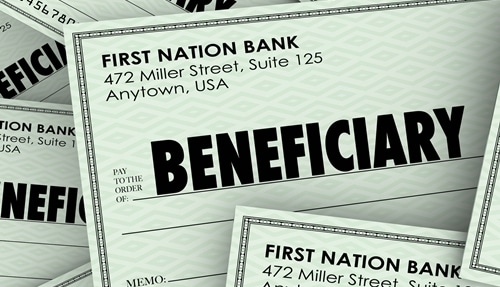Legacy Design Strategies
Omaha, NE, Minot, ND and Iowa Fall, IA Estate Planning and Elder Law Firm
Estate Planning and Elder Law Blog

Beneficiary designations supersede all other estate planning documents, so getting them right makes an important difference in achieving your estate plan goals. Mistakes with beneficiary designations can undo even the best plan, says a recent article “5 Retirement Plan Beneficiary Mistakes to Avoid” from The Street. Periodically reviewing beneficiary forms, including confirming the names in writing with plan providers for workplace plans and IRA custodians, is important.
Post-death changes, if they can be made (which is rare), are expensive and generally involve litigation or private letter rulings from the IRS. Avoiding these five commonly made mistakes is a better way to go.
1—Neglecting to name a beneficiary. If no beneficiary is named for a retirement plan, the estate typically becomes the beneficiary. In the case of IRAs, language in the custodial agreement will determine who gets the assets. The distribution of the retirement plan is accelerated, which means that the assets may need to be completely withdrawn in as little as five years, if death occurs before the decedent’s required beginning date for taking required minimum distributions (RMDs).
With no beneficiary named, retirement plans become probate accounts and transferring assets to heirs becomes subject to delays and probate fees. Assets might also be distributed to people you didn’t want to be recipients.
2—Naming the estate as the beneficiary. The same issues occur here, as when no beneficiary is named. The asset’s distributions will be accelerated, and the plan will become a probate account. As a general rule, estates should never be named as a beneficiary.
3—Not naming a spouse as a primary beneficiary. The ability to stretch out the distribution of retirement plans ended when the SECURE Act was passed. It still allows for lifetime distributions, but this only applies to certain people, categorized as “Eligible Designated Beneficiaries” or “EDBs.” This includes surviving spouses, minor children, disabled or special needs individuals, chronically ill people and individuals who are not more than ten years younger than the retirement plan’s owner. If your heirs do not fall into this category, they are subject to a ten-year rule. They have only ten years to withdraw all assets from the account(s).
If your goal is to maximize the distribution period and you are married, the best beneficiary is your spouse. This is also required by law for company plans subject to ERISA, a federal law that governs employee benefits. If you want to select another beneficiary for a workplace plan, your spouse will need to sign a written spousal consent agreement. IRAs are not subject to ERISA and there is no requirement to name your spouse as a beneficiary.
4—Not naming contingent beneficiaries. Without contingency, or “backup beneficiaries,” you risk having assets being payable to your estate, if the primary beneficiaries predecease you. Those assets will become part of your probate estate and your wishes about who receives the asset may not be fulfilled.
5—Failure to revise beneficiaries when life changes occur. Beneficiary designations should be checked whenever there is a review of the estate plan and as life changes take place. This is especially true in the case of a divorce or separation.
Any account that permits a beneficiary to be named should have paperwork completed, reviewed periodically and revised. This includes life insurance and annuity beneficiary forms, trust documents and pre-or post-nuptial agreements.
Reference: The Street (Aug. 11, 2020) “5 Retirement Plan Beneficiary Mistakes to Avoid”

Get Started Today
Book your Free Estate Planning Consultation Now
Stay Up-To Date
Subscribe to Our eNewsletter
9859 South 168th Avenue,
Omaha, NE 68136
7 Third Street SE, Suite 202,
Minot, ND 58701
320 North Oak Street, PO Box 295,
Iowa Falls, IA 50126
